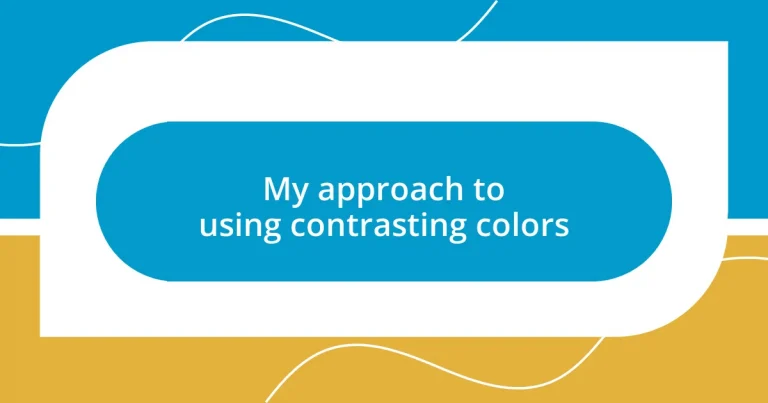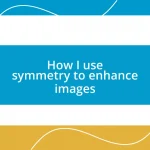Key takeaways:
- Color theory enhances design by using the color wheel to choose colors that evoke specific emotions and messages.
- Contrast is crucial for readability, emphasis, and guiding viewer focus, making designs more engaging and intuitive.
- Common mistakes include neglecting overall design coherence, overlooking accessibility for color blindness, and overusing contrasting colors without appropriate white space.
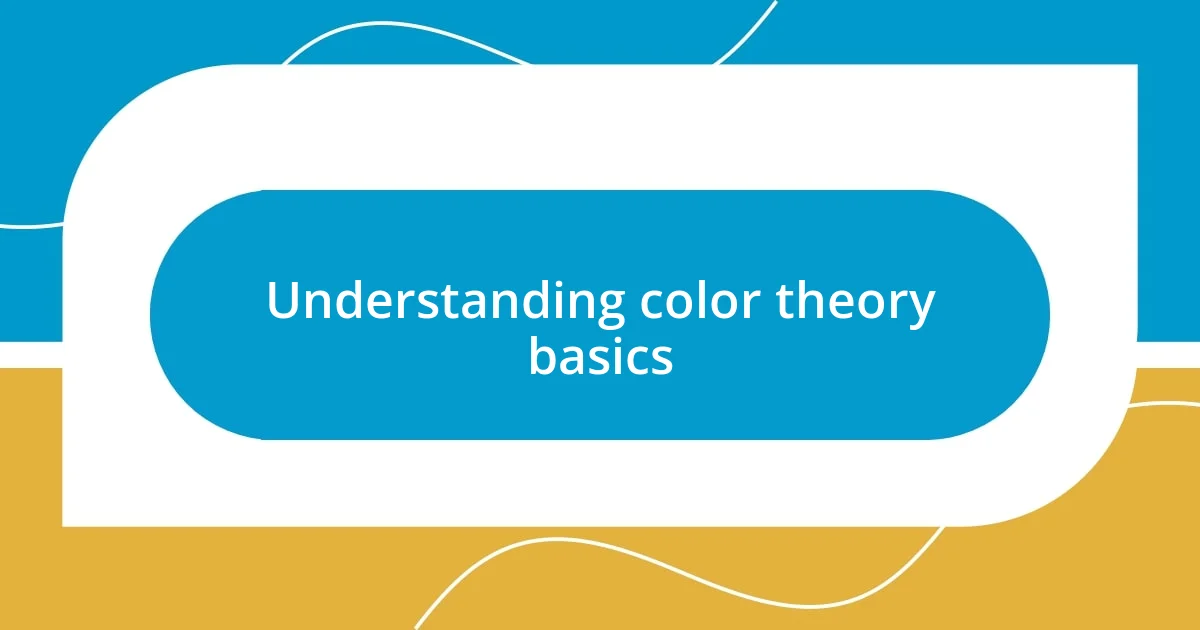
Understanding color theory basics
Color theory is foundational in the world of design, and I often find it fascinating how colors can evoke emotions and set the tone of a piece. For instance, when I first started experimenting with contrasting colors in my own work, I noticed how a vibrant orange against a deep blue created a lively tension that almost leaped off the page. It made me wonder, how can something as simple as color choice change the way we perceive a message?
At its core, color theory revolves around the color wheel, where colors are categorized into primary, secondary, and tertiary hues. Understanding this wheel has genuinely transformed my creative process; it’s like having a secret toolbox. Have you ever tried pairing complementary colors? I remember being taken aback by the way red and green brought out the best in each other during a project, creating an impactful visual that drew in the audience.
Moreover, I’ve learned that warm colors tend to evoke feelings of excitement or warmth, while cool colors can create a calming effect. It’s interesting to consider how these emotions correlate to the selections we make. When I chose a palette for my home office, I leaned towards soft blues and greens to foster a soothing environment. What colors resonate with you, and how do they affect your mood in different settings?
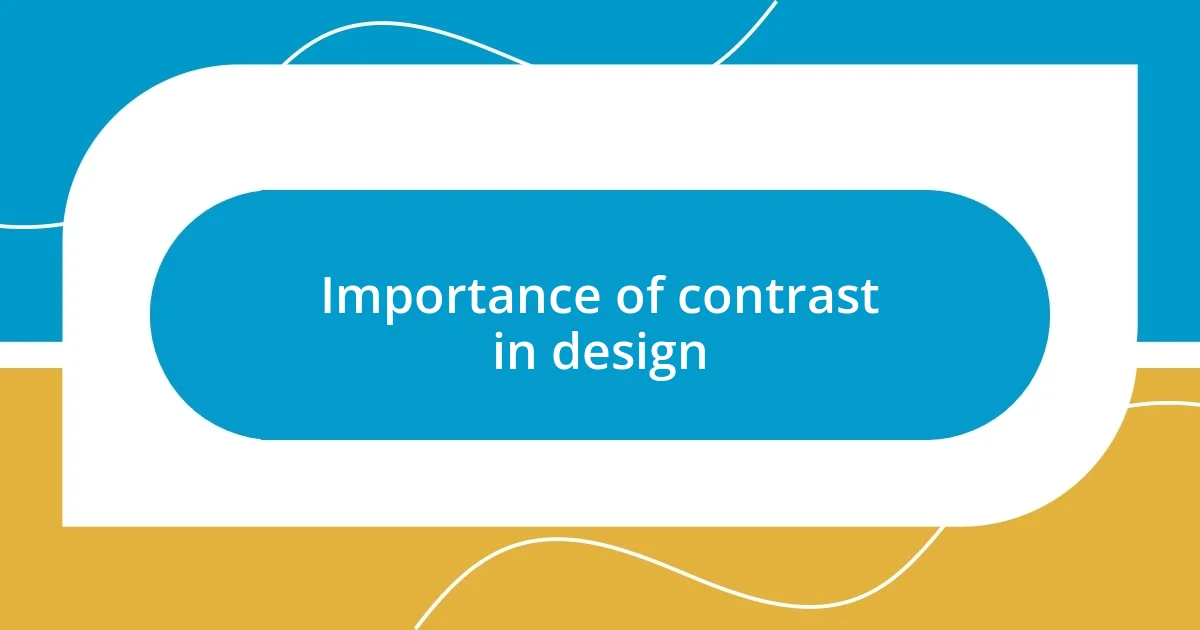
Importance of contrast in design
The use of contrast in design is paramount. It helps elements stand out, allowing viewers to easily navigate and understand the content. I remember a project where I used stark black text on a crisp white background. The readability was outstanding, and I could see my clients’ eyes lighting up as they grasped the information effortlessly.
Contrast isn’t just about aesthetics; it’s a powerful tool for communication. For instance, when I designed a marketing brochure, I employed contrasting colors to emphasize key messages. The bright yellow headers against a dark blue body made the important points pop, ensuring they caught the reader’s attention immediately. It was rewarding to see how simple color choices could lead to heightened engagement and clarity.
Interestingly, contrast also plays a crucial role in conveying hierarchy. By adjusting color saturation and brightness, I can guide the viewer’s eye from the most important information to secondary elements. I once rearranged a web page layout, using deep hues for buttons and lighter shades for background elements. The transformation made navigation intuitive. Have you considered how contrast might influence your design projects?
| Aspect | Importance |
|---|---|
| Readability | Enhances clarity and comprehension |
| Emphasis | Draws attention to key elements |
| Hierarchy | Guides viewer’s focus |
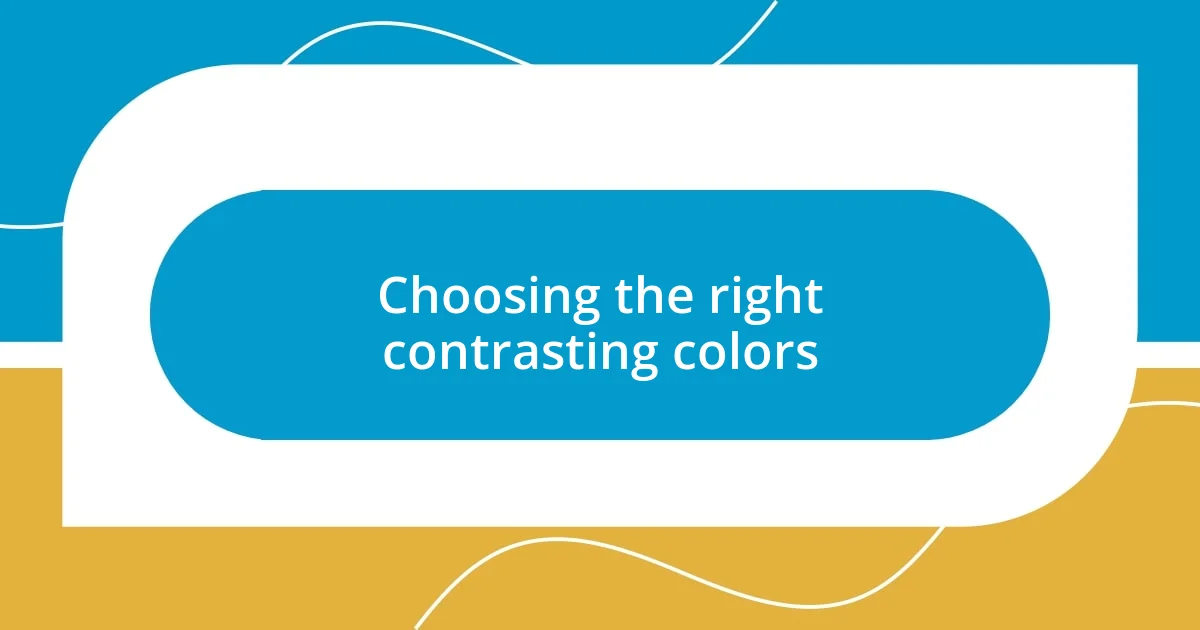
Choosing the right contrasting colors
When choosing contrasting colors, I often let the project’s mood and message guide my selections. For example, while working on a community event flyer, I opted for a vibrant pink paired with a bold teal. The combination felt energetic and inviting, perfectly matching the event’s lively spirit. I’ve learned that ensuring the colors align with the intended emotions can make a world of difference in how the audience receives the message.
Here are some essential aspects to consider:
- Purpose of the Design: What emotions do you want to evoke?
- Target Audience: Are you appealing to a specific demographic that might resonate with certain colors?
- Color Relationships: Are the colors complementary, analogous, or triadic? Each pairing tells a different story.
- Cultural Context: How do different cultures perceive certain colors? This can significantly impact your design’s effectiveness.
As I reflect on my design journey, I realize how often I’ve had to adapt my choices based on feedback. For instance, I once presented a design with a striking orange and purple palette, only to find that it felt too aggressive for my audience. By shifting to softer contrasts, I managed to maintain interest without overwhelming the viewer, creating a more harmonious and inviting overall effect.
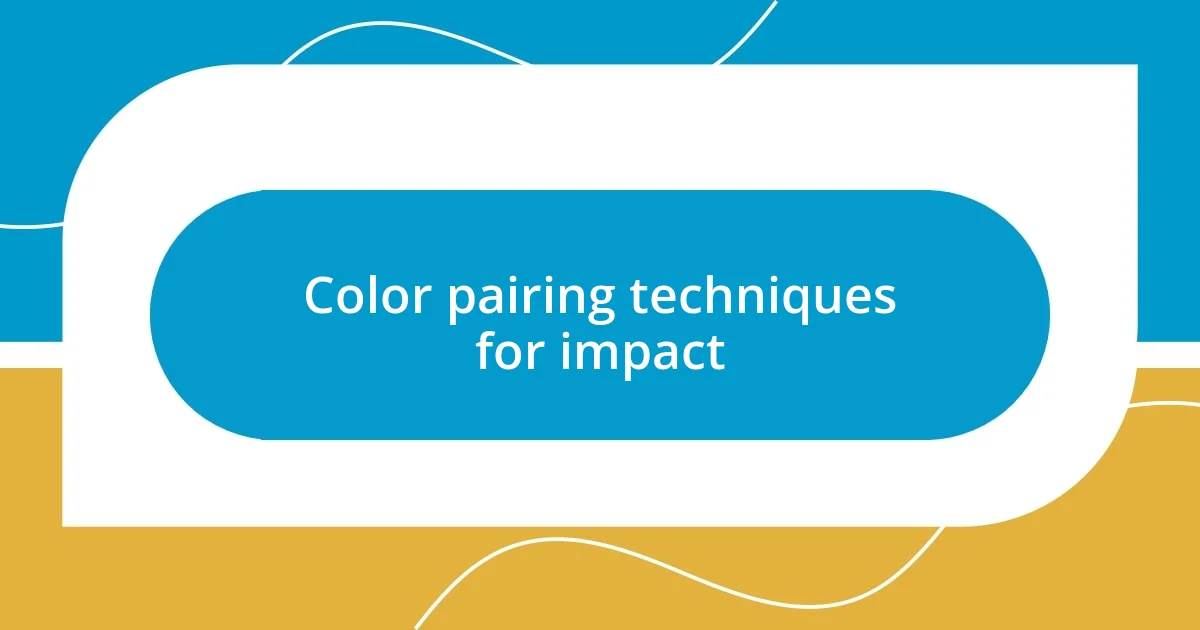
Color pairing techniques for impact
When I think about color pairing techniques, I often remind myself of the color wheel. Using complementary colors, sitting directly opposite each other on the wheel, can create a dynamic and visually arresting effect. For example, I once designed a poster for a local art show with a striking combination of blue and orange. The high contrast grabbed attention immediately, drawing the viewer in like a moth to a flame. Have you ever noticed how certain color combinations seem to have a magnetic pull?
Another approach I like is to utilize analogous colors—those that sit adjacent to each other on the wheel. This technique offers a softer, more cohesive look while still allowing contrast. In one of my recent web projects, I opted for a gradient that transitioned from green to yellow-green. The visual flow was soothing, creating a pleasant experience that encouraged longer visits. I found it fascinating how subtle color shifts could provide a sense of harmony while still being engaging.
Lastly, I sometimes play with saturation and brightness to establish impact. Darker shades can anchor an element, while lighter tones can elevate. I vividly remember crafting an invitation where I used a dark plum paired with a light lavender. The rich contrast not only made the text legible but also evoked an air of elegance and sophistication. It’s remarkable how thoughtful color choices can evoke feelings—what feelings do your colors evoke in your designs?
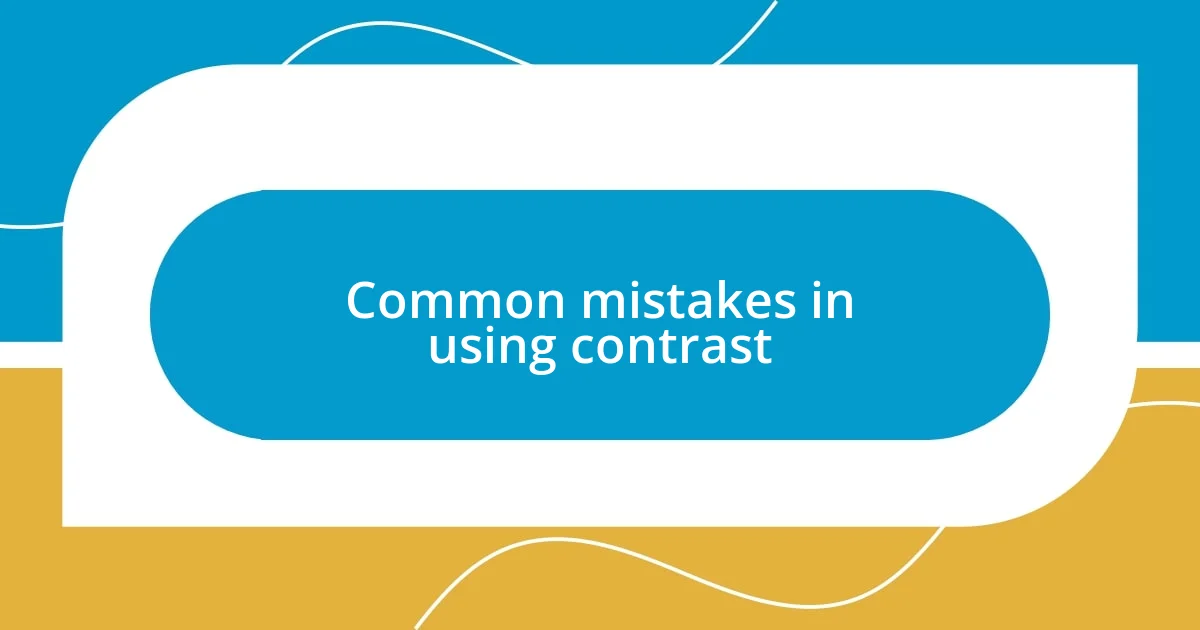
Common mistakes in using contrast
One common mistake I often see is relying solely on color contrast without considering the overall design. I recall a project where I paired an intense red with a neon green for a promotional banner. While these colors popped, the design ended up feeling chaotic rather than eye-catching. Can you relate to that moment when you realize a striking idea doesn’t translate into an effective visual?
Another pitfall is overlooking accessibility. I once created a presentation with high contrast colors that looked stunning, but I discovered later that individuals with color blindness struggled to read the text. This experience taught me that considering different perspectives not only broadens the design’s reach but also enriches its impact. Have you ever considered how many people might be experiencing your design differently?
Overusing contrasting colors is also a frequent misstep. I remember being drawn to bold combinations and crammed them into a single layout, thinking more was better. Instead, I learned that moderation is key; allowing some white space can enhance the contrast and create a more sophisticated look. Isn’t it interesting how a little space can breathe life into a design and highlight the colors you carefully chose?
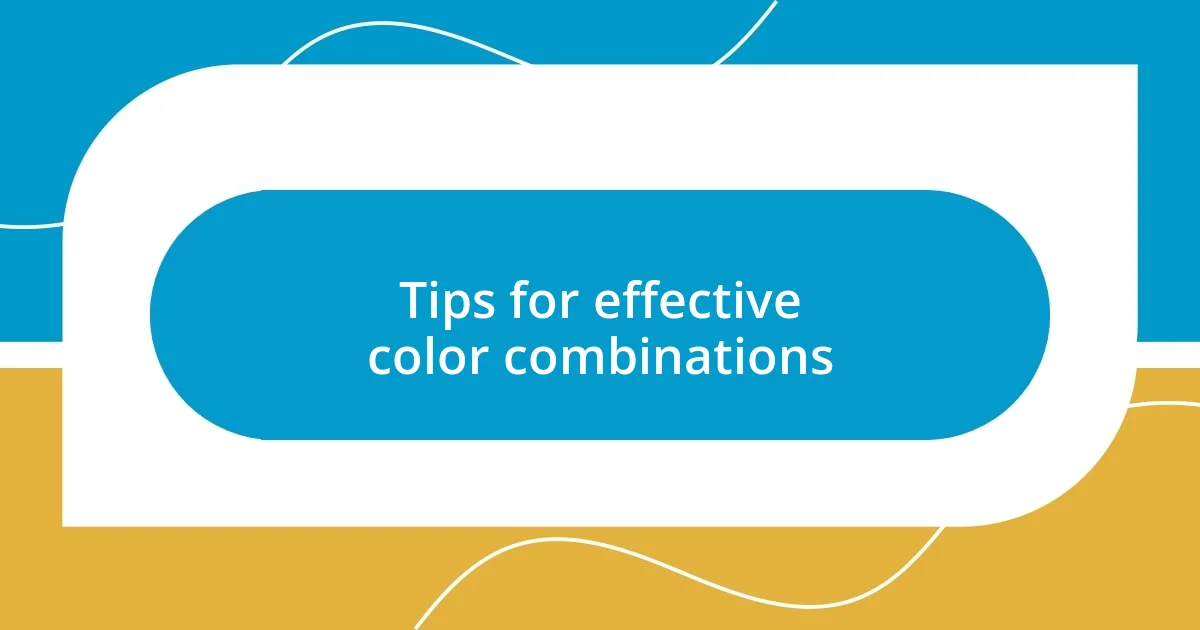
Tips for effective color combinations
Finding the right color combination can be a game changer in design. I learned this firsthand while working on a brand project where I paired deep teal with golden yellow. The immediate visual engagement left both the client and me smiling, as the colors not only complemented each other but also embodied the brand’s personality. How do you feel when your colors truly resonate with your message?
When considering your combinations, don’t shy away from experimenting with texture and patterns alongside colors. I once tried a polka dot pattern in pastel colors that danced with the background—such delightful movement! It struck me how the playful synergy between color and shape could evoke joy and invitation. Have you ever paired a color scheme with a specific pattern and found it elevated your entire design?
Lastly, never underestimate the power of the emotional weight colors carry. I remember working on a tribute website and opted for muted blues and grays to convey a sense of calm. The feedback was overwhelming; people shared how the colors felt comforting during a difficult time. What story do your colors tell? Understanding the sentiment behind your choices can guide you in creating a deeply resonant visual experience.












